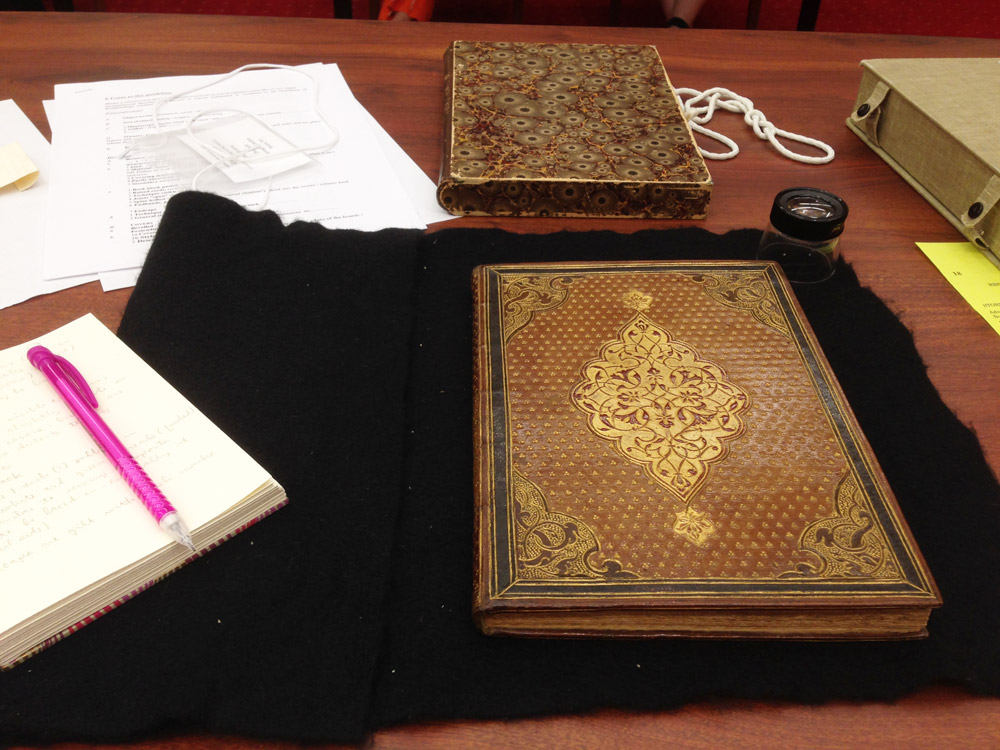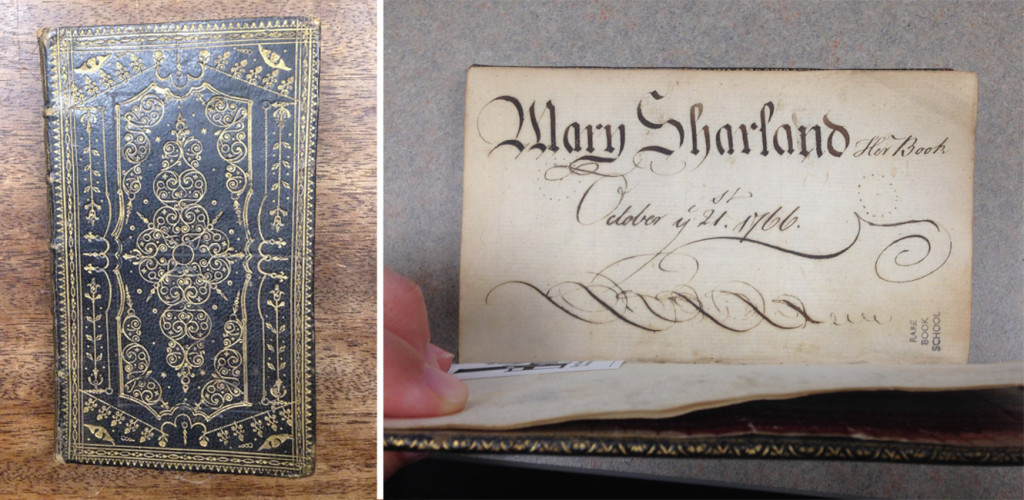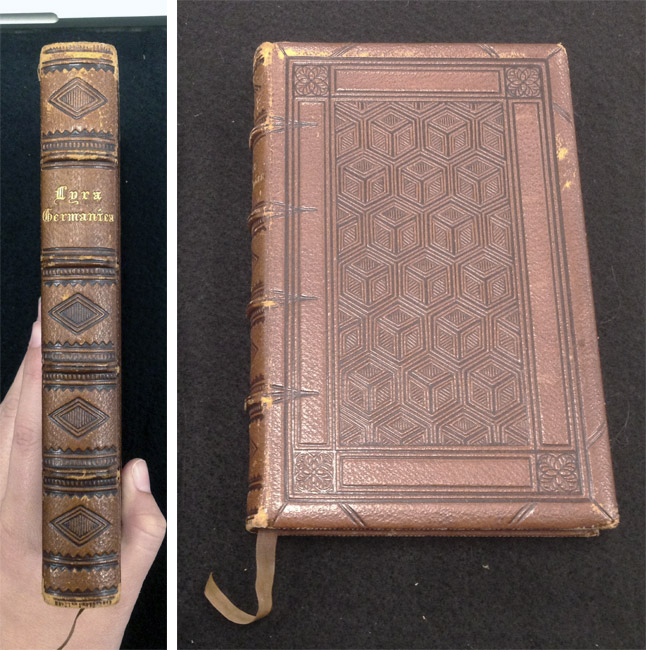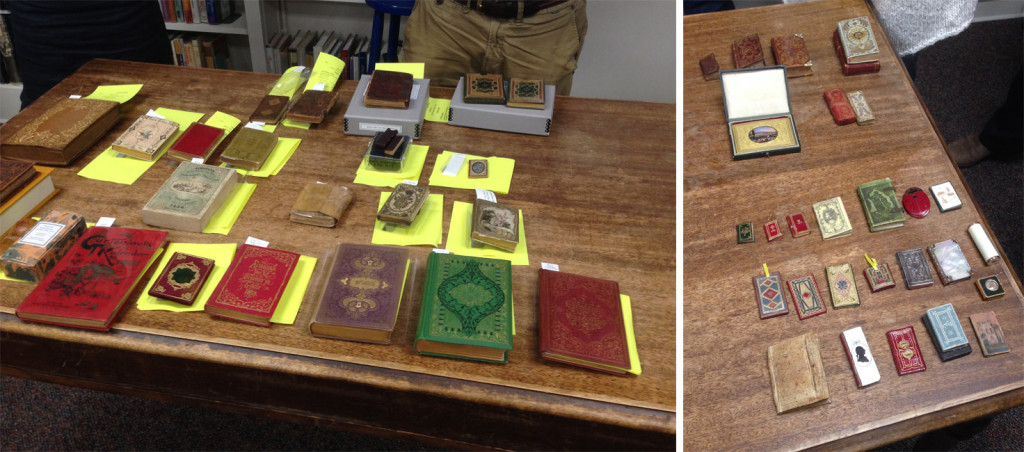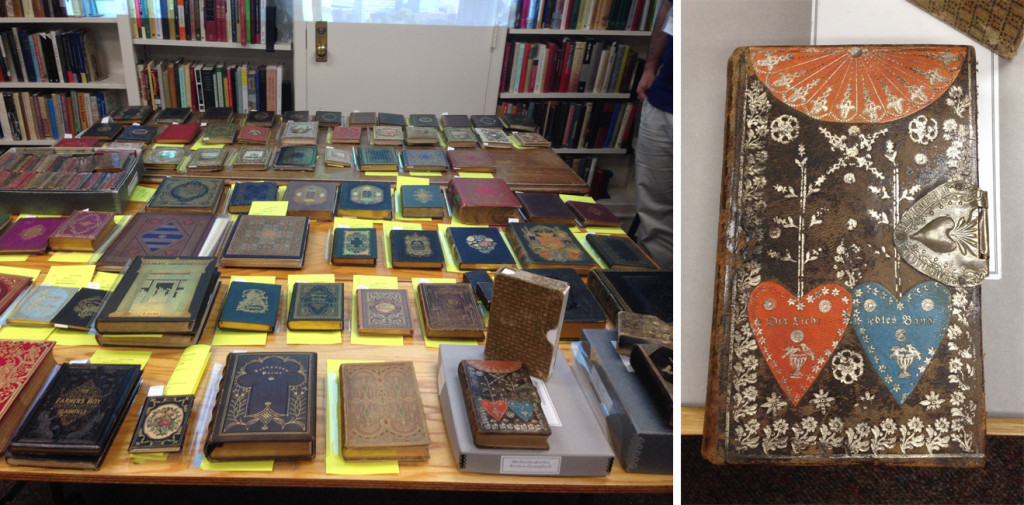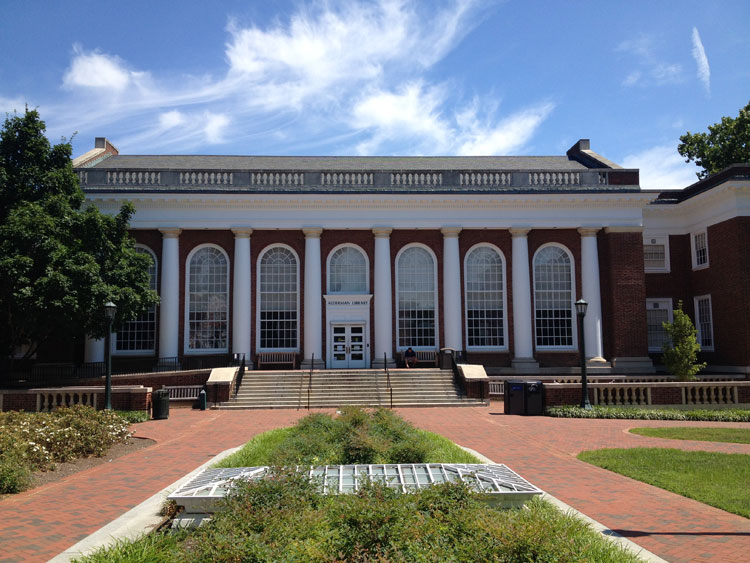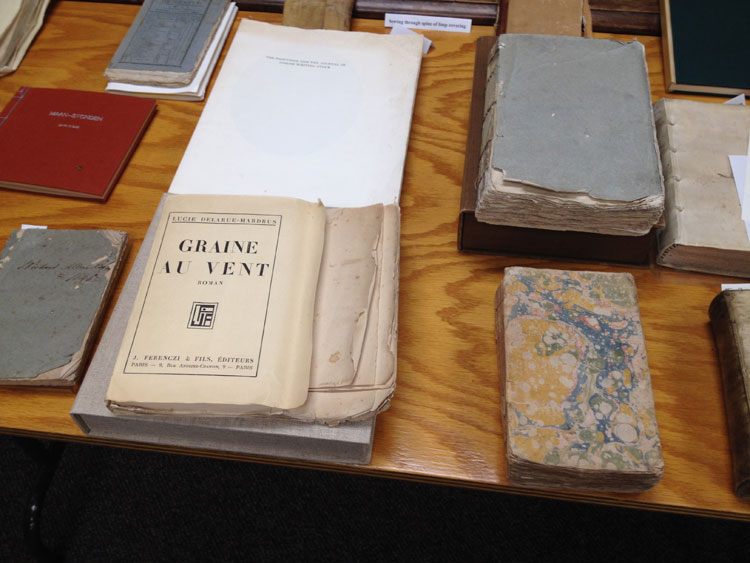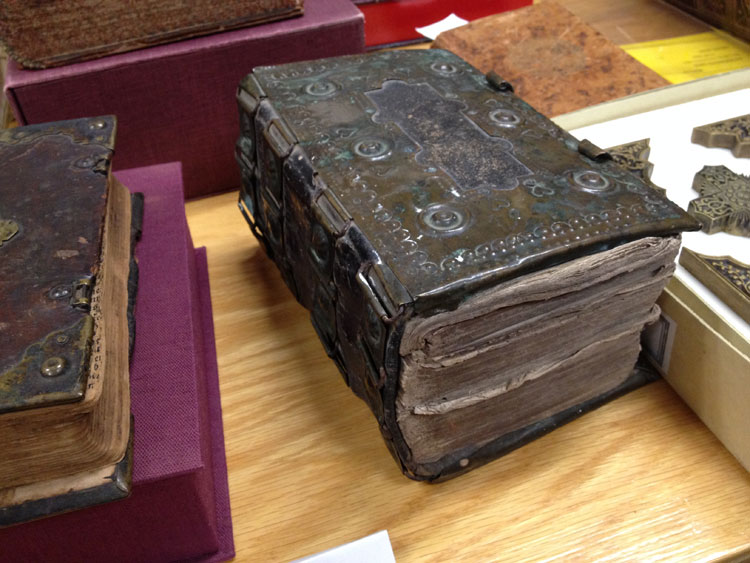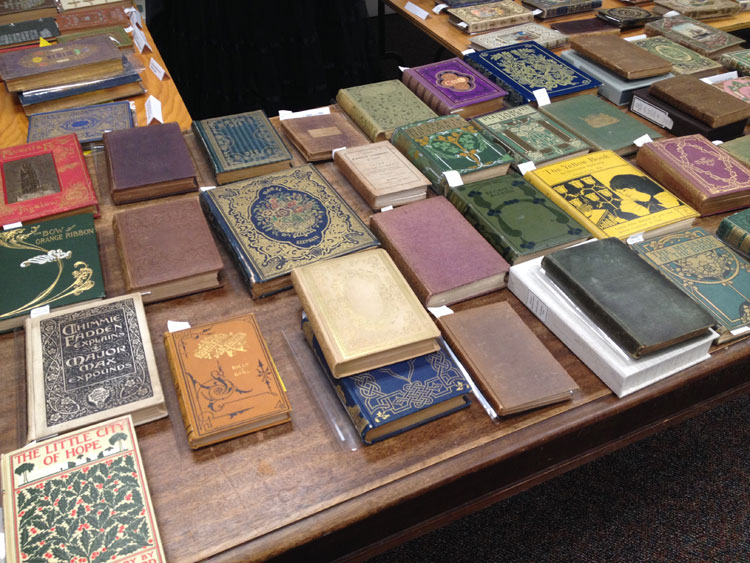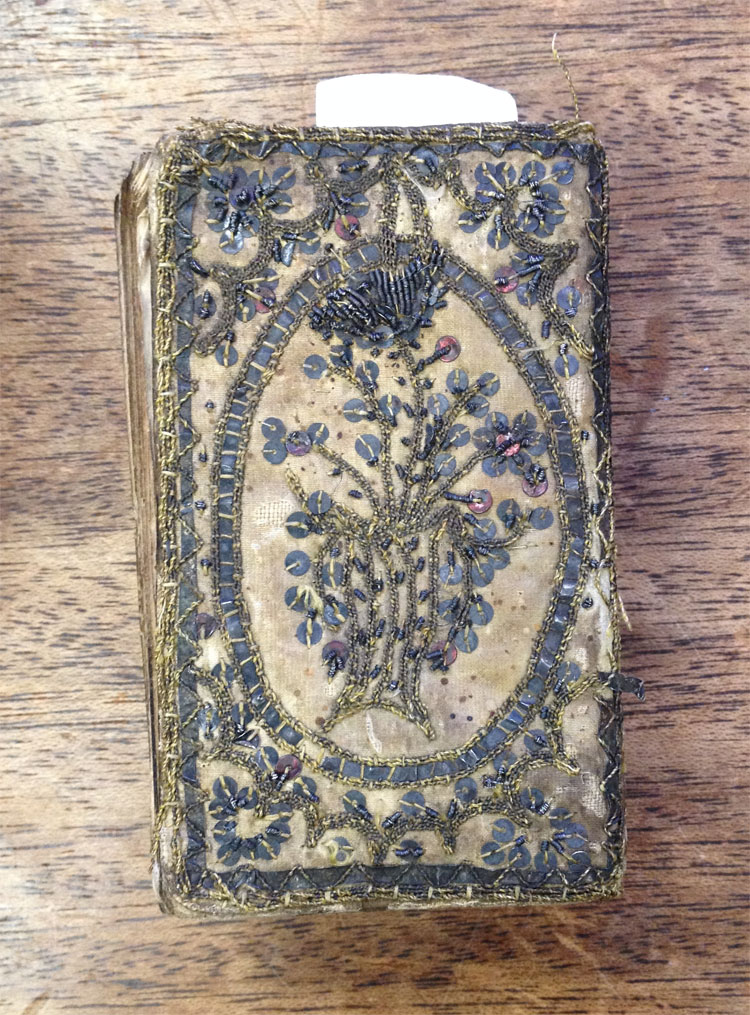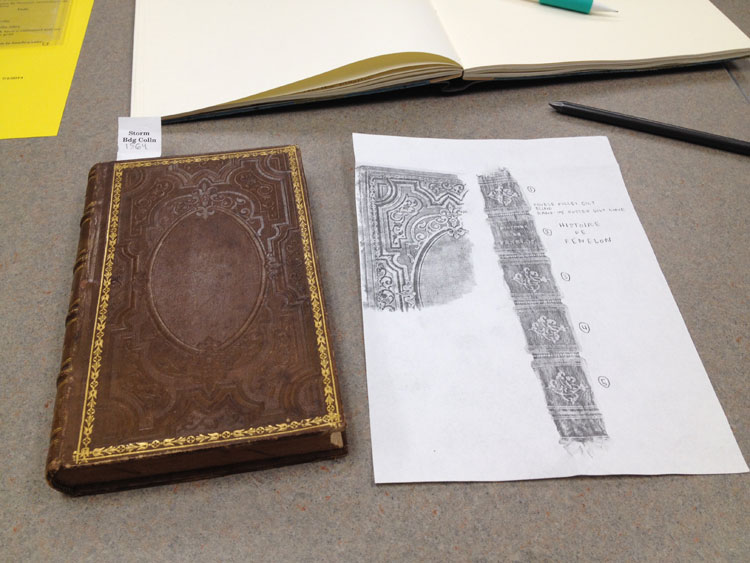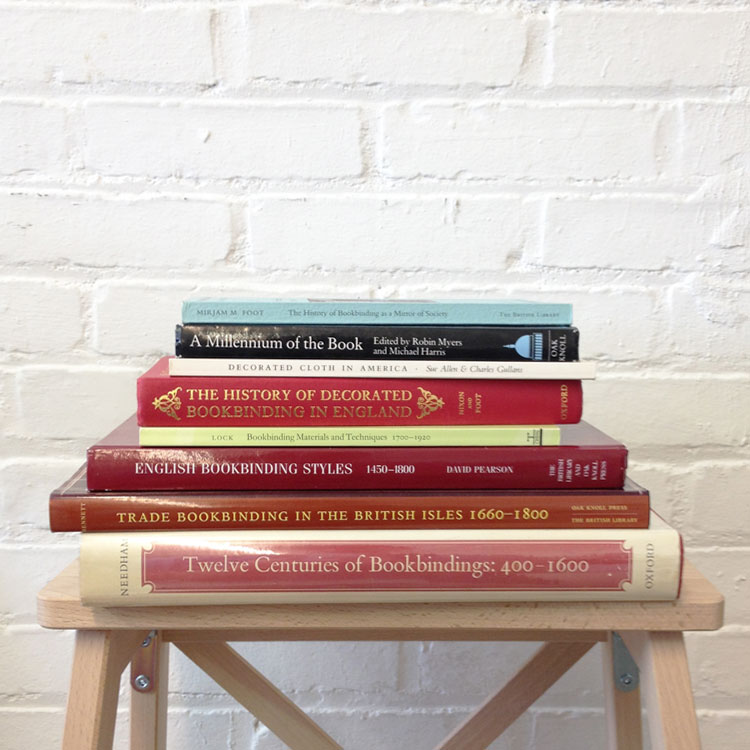During the week of July 5th, I spent my days walking the grounds at the University of Virginia and its surrounding neighborhoods in Charlottesville as I attended Rare Book School for the second time. This year I was pleasantly surprised by the return of many of my classmates from last year as we had all enrolled to take Jan Storm van Leeuwen’s Advanced Seminar in the History of Bookbinding. You can check out my post from last year here on the Introduction to the History of Bookbinding.
The class began with Jan laying out the terminology that would be used throughout the course. As many bookbinders and other professionals working the book may know, terms regarding binding anatomy, design and tools vary from country to country. There are even multiple terms describing the same thing. For ease, Jan chose to use typical English binding terms.
With each lecture, Jan took us through a detailed history of binding styles and design styles beginning mainly with the Middle Ages and moving through to the 19th century surveying several countries throughout Europe and briefly speaking about bindings in the United States. After several hours of lecturing and many pages of handwritten notes, we were invited to view items from Special Collections and tasked with creating detailed descriptions before comparing our own to Jan’s.
The description process begins with an overview of the binding before narrowing the focus to each little detail. Using Jan’s extensive outline as a guide, I would note the decoration that adorned not only the covers and spine but also along the board edge, turn-in, endcap and raised bands. Attention is also given to the endbands, text block edges and any text that appears on the binding. Once the exterior of the binding is reviewed, I would then survey the endpapers and the book for any annotations and marks of ownership. The reason for such a comprehensive overview is to extract clues in order to pinpoint the binding’s country of origin and time period.
The first binding I had the pleasure of describing was a beautifully tooled leather bound copy of La siege de Mets by Bertrand de Salignac Fenelon. From my findings I deduced that this binding may have produced sometime during the late Middle Ages in France. The Renaissance saw a Persian influence in binding with much more gold tooling. The most rewarding part of describing this binding was my discovery of very faint lettering on the spine. The lettering was blind and placed over the semé patterning (small repeating background pattern). This faint lettering confused me at first, but then I came to realize that the lettering was a result of the title having been tooled onto a label much later in the life of the binding. The label has since been removed, but proof of its prior existence still remains.
Moving into the 18th century, I grabbed a fairly indelicate Cottage-roof style binding. That is to say, the design is quite striking, but not the work of a talented finisher. As a design style only found in England during the late 17th to the early 18th century it wasn’t too difficult to determine its origins. Inside is a calligraphic inscription: “Mary Sharland, Her Book, October 21st, 1766” adorned with flourishes. In addition to the inscription were some unusual punched shapes (two dotted outlines of a circle seen faintly on either side of the date in the image below).
One of the last bindings I had the opportunity to look at was an unusual bespoke binding from the 19th century which incorporates binding and design styles from the Middle Ages Germany to 18th century England. Lyra Germanica was published in 1859 and translated from German into English.
The spine and joint have been tooled in a way that accentuate the raised cords as was often seen on bindings in the Middle Ages. The boards are heavily sculpted, another unusual feature for the 19th century but typical for bindings from the Middle Ages. The covers were panel stamped with a very modern geometric design. The wide frame with corner compartments is very typical in English bindings beginning in the 19th century.
Before the course came to an end, we looked at a selection of almanacs from RBS’s collection as well as miniature almanacs from the collection of book collector Pat Pitsner (one of my classmates). Within Pat’s collection, we saw a few embroidered almanacs, one shaped like a ladybug, a silk scroll housed in an enamel case and a late-fanfare style binding with matching leather slipcase. It was a wonderful surprise and with each binding, oohs and aahs rose from the class.
Finally, we took a look at a large sample of publisher’s binding after receiving a brief lecture from Jan. There were also a few bespoke bindings sprinkled about the table, like the binding on the right in the image below. Gifted to his newly betrothed wife, this binding is tooled over paper onlays in silver leaf that may have been mixed with other metals.
I once again had a wonderful time at Rare Book School where I gained a deeper understanding of binding styles from around Europe during the late Middle Ages to the 19th century. It was such a treat to sit in on Jan’s class and to be exposed to his vast knowledge on bookbinding history. If you’ve been debating about whether or not to make the trip to Rare Book School, I would highly recommend it. You are guarantee to walk away with an abundance of knowledge on the topic that interests you. Plus you’ll be surrounded by charming book loving folks working in all sorts of fields and backgrounds.
